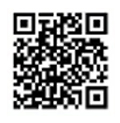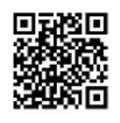目的探讨在新冠肺炎疫情下互联网+管理模式在耐多药肺结核(MDR-PTB)患者居家治疗中的应用效果。方法将2020年3月1日至2021年3月31日收治的100例MDR-PTB患者,随机分为对照组和观察组,每组50例。对照组患者应用传统的“三位一体”(定点医院-疾控中心-社区卫生服务中心/站)管理模式进行治疗管理,观察组患者应用互联网+管理模式进行治疗管理。对两组患者治疗前后的心理状况、营养状况,治疗后的临床治疗效果和治疗期间的治疗依从率进行比较。结果治疗8周后,两组患者的焦虑自评量表(SAS)、抑郁自评量表(SDS)评分降低,自我效能感量表(GSES)评分增高;观察组患者的SDS评分低于对照组,GSES评分高于对照组,差异有统计学意义(均P<0.05)。两组患者的体质量指数、血红蛋白水平、血清白蛋白水平均随着治疗时间的延长逐步增高[治疗前(T1)、治疗12周时(T2)、治疗24周时(T3)](均P<0.05),但两组患者之间差异均无统计学意义(均P>0.05);两组患者的营养风险筛查评分随着治疗时间的延长逐步降低(P<0.05),但两组患者之间差异无统计学意义(P>0.05)。治疗3个月、6个月时,两组患者的痰涂片阳性率、痰培养阳性率差异均无统计学意义(均P>0.05),但观察组患者的胸部CT好转率(84.0%,94.0%)高于对照组(66.7%,76.6%)(均P<0.05)。两组患者的治疗依从率差异无统计学意义(P>0.05)。结论在新冠肺炎疫情下,应用互联网+管理模式对MDR-PTB患者进行治疗管理,能有效地缓解患者的焦虑、抑郁情绪,提高患者的自我效能感,改善患者的营养状况。
当前位置:首页 / 新冠肺炎疫情下互联网+管理模式在耐多药肺结核患者居家治疗中的应用分析▲
论著
|
更新时间:2022-08-01
|
新冠肺炎疫情下互联网+管理模式在耐多药肺结核患者居家治疗中的应用分析▲
Application analysis of Internet Plus management mode in home treatment of multidrug-resistant pulmonary tuberculosis patients under the COVID-19 epidemic
内科 202217卷03期 页码:264-268
作者机构:南宁市第四人民医院,广西南宁市530023
基金信息:▲基金项目:南宁市科学研究与技术开发计划项目(20213025-3);南宁市科学研究与技术重点研发计划项目(20213025-1);南宁市兴宁区发展改革和科学技术局项目(2021A11)
- 中文简介
- 英文简介
- 参考文献
ObjectiveTo investigate the application effect of the Internet Plus management mode in the home treatment of patients with multidrug-resistant pulmonary tuberculosis (MDR-PTB) under the COVID-19 epidemic. MethodsA total of 100 MDR-PTB patients admitted to the hospital from March 1, 2020 to March 31, 2021 were randomly divided into a control group or an observation group, with 50 cases in each group. Patients in the control group received the traditional “Trinity” (designated hospitals-centers for disease control and prevention-community health centers/stations) management mode in the treatment and management, while patients in the observation group received the Internet Plus management mode. The psychological and nutritional status before and after the treatment, the clinical treatment effect after the treatment, and the treatment compliance rate during the treatment were compared between the two groups. ResultsAfter 8 weeks of treatment, the Self-Rating Anxiety Scale (SAS) scores and Self-Rating Depression Scale (SDS) scores decreased, and the General Self-Efficacy Scale (GSES) scores increased in both groups; the SDS score was lower while the GSES score was higher in the observation group than in the control group, with statistically significant differences (all P<0.05). The body mass indexes, hemoglobin levels, and serum albumin levels of the two groups gradually increased with the prolongation of the treatment time [before treatment (T1), at the end of the 12th week of treatment (T2), and at the end of the 24th week of treatment (T3)] (all P<0.05), but the aforementioned indices showed no statistically significant difference between the two groups (all P>0.05). The nutritional risk screening scores of the two groups gradually decreased with the prolongation of the treatment time (P<0.05), which exhibited no statistically significant difference between the two groups (P>0.05). At the ends of the 3rd month and the 6th month of the treatment, there was no significant difference in the positive rates of sputum smear and sputum culture between the two groups (all P>0.05), but the improvement rates of chest CT in the observation group (84.0%, 94.0%) were higher than those in the control group (66.7%, 76.6%) (all P<0.05). There was no statistically significant difference in the treatment compliance rate between the two groups (P>0.05). ConclusionUnder the COVID-19 epidemic, the application of the Internet Plus management mode in the treatment and management of MDR-PTB patients can effectively relieve their anxiety and depression and improve their self-efficacy and nutritional status.
-
无




 注册
注册 忘记密码
忘记密码 忘记用户名
忘记用户名 专家账号密码找回
专家账号密码找回 下载
下载 收藏
收藏
